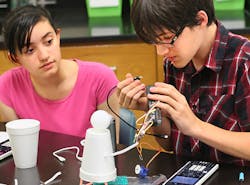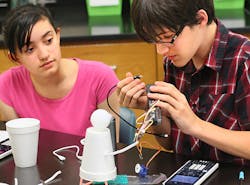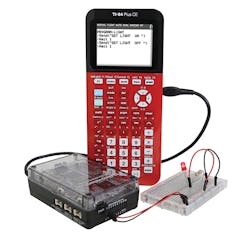Have Chip Vendors Taken Over Where Heathkit Left Off?
Long ago, Heathkit provided hordes of hackers and budding engineers with educational platforms that often turned out to be useful devices like amplifiers, radio receivers and oscilloscopes. It also had kits that were more STEM-oriented, although the term was “educational” at the time. Heathkit is no more (actually that is incorrect, heathkit.com exists although the collection of hardware is a far cry from its heyday and a bit eclectic), having wandering into the PC and robotics market for a time.
There have been many companies that have taken the place of Heathkit, ranging from Parallax (see “Multicore Propeller ‘Flys’ Quadcopter” on electronicdesign.com) to SparkFun (see “The Rise And Fall Of Heathkit—And Rise of SparkFun” on electronicdesign.com). The rise of the low-cost microcontroller has turned expensive development kits into inexpensive platforms like the BBC’s micro:bits that are going to millions of students to build the next big thing in the Internet of Things (IoT).
That brings us to Texas Instruments’ (TI) latest offering, the TI-Innovator Hub (Fig. 1). It targets the classroom and STEM education with its new MSP-EXP432P401-ET TI LaunchPad Board. The module exposes three input and three output ports along with a pair of micro-USB ports for power and programming. There is also an I2Cport and a 20-pin header for the optional Breadboard Pack.
Maker platforms like Raspberry Pi and Arduino have built a massive base of users, but it is a small fraction of the number of students that could make use of these STEM-oriented platforms. The level of success will depend upon the community that can be developed and the amount of support that is provided from the vendors.
About the Author
William G. Wong
Senior Content Director - Electronic Design and Microwaves & RF
I am Editor of Electronic Design focusing on embedded, software, and systems. As Senior Content Director, I also manage Microwaves & RF and I work with a great team of editors to provide engineers, programmers, developers and technical managers with interesting and useful articles and videos on a regular basis. Check out our free newsletters to see the latest content.
You can send press releases for new products for possible coverage on the website. I am also interested in receiving contributed articles for publishing on our website. Use our template and send to me along with a signed release form.
Check out my blog, AltEmbedded on Electronic Design, as well as his latest articles on this site that are listed below.
You can visit my social media via these links:
- AltEmbedded on Electronic Design
- Bill Wong on Facebook
- @AltEmbedded on Twitter
- Bill Wong on LinkedIn
I earned a Bachelor of Electrical Engineering at the Georgia Institute of Technology and a Masters in Computer Science from Rutgers University. I still do a bit of programming using everything from C and C++ to Rust and Ada/SPARK. I do a bit of PHP programming for Drupal websites. I have posted a few Drupal modules.
I still get a hand on software and electronic hardware. Some of this can be found on our Kit Close-Up video series. You can also see me on many of our TechXchange Talk videos. I am interested in a range of projects from robotics to artificial intelligence.




